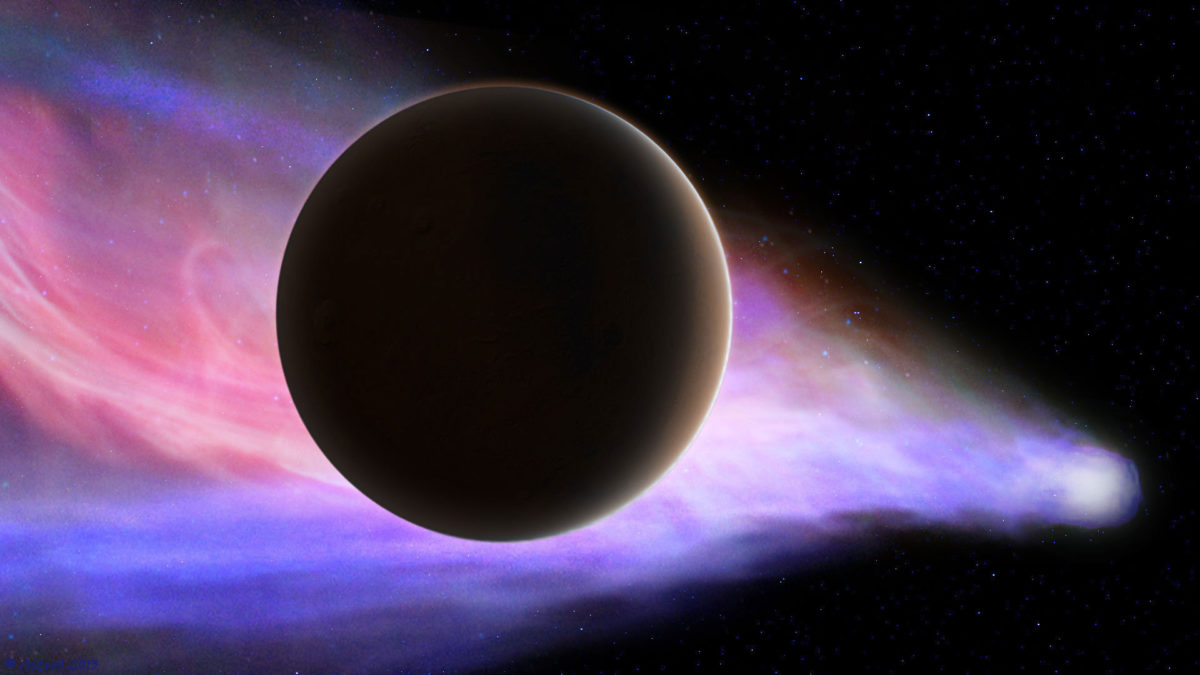Emily Lakdawalla • Mar 05, 2013
Will comet Siding Spring make a meteor shower on Mars?
Last week I posted about a newly discovered comet that will be making a very close approach to Mars on October 19, 2014. Right now, JPL's Solar System Dynamics group shows that there is still a possibility that C/2013 A1 (Siding Spring) could hit Mars. But the uncertainty in its position at that time is large -- the closest approach could happen an hour earlier, or an hour later -- so we're a long way from knowing yet whether it will or (more likely) won't impact.
If it did hit, it would be a very bad day for everything orbiting and roving Mars; Phil Plait has considered that possibility. I'm not as preoccupied with death and destruction as Phil is, so I'm not focusing on the extremely unlikely impact risk. But I was worried about the risk posed to our spacecraft by the cloud of debris that accompanies a comet, so I wrote to a comet scientist friend to ask for help. She passed my questions on to astronomer Mike Kelley, and now I'm not nearly as worried as I was last week. It seems to me that the comet will have to be very, very close to Mars for its debris to pose any real risk. Here's what Mike told me.
This is an interesting case to consider. As you already know, the uncertainty in the orbit does allow for an impact, but there is a lot of wiggle room and, for the moment, this case seems unlikely. However, you make a good point; we should consider if the dust could produce a Martian meteor shower. This scenario reminds me of the occasional meteor storms that occur on Earth after a close comet flyby. One that comes to mind are the meteor storm of Comet 21P/Giacobinni-Zinner in 1933 and 1946, when Earth passed the orbit of the comet shortly after the comet had been there. Thousands of meteors per hour were observed in these events.
With this in mind, I examined the distance between Mars and the comet's tail. The comet is currently predicted to pass Mars at a distance of about 100,000 km. Unfortunately, the comet's tail is more or less pointed away from Mars during the close encounter. In other words, it doesn't really come any closer to Mars than this distance.
So, can the coma be ~100,000 km in size? If small dust grains are ejected at a few tens of m/s, it only needs to be ejected a month or two before the closest approach to Mars to travel this distance in the absence of radiation pressure. But accounting for radiation pressure any dust this old will be pushed far down the tail, and since the tail is pointed away from Mars... no meteors. I ran a short 3D simulation that agrees with this assessment. The coma has already evolved into a tail well before it travels 100,000 km.
You were also asking about millimeter-sized grains. These will be ejected with lower velocities, perhaps only a meter per second or less, and would take more than a year to travel 100,000 km from the comet in the absence of radiation pressure. Again, once we consider radiation pressure, and giving it a year to act on the dust, even grains this large will be pushed quite far down the tail.
So, in short, I'm not predicting anything spectacular for Mars, but I hope I'm wrong! If the closest approach distance decreases significantly, then we may have to revisit this experiment with a more careful treatment.
Support our core enterprises
Your support powers our mission to explore worlds, find life, and defend Earth. You make all the difference when you make a gift. Give today!
Donate

 Explore Worlds
Explore Worlds Find Life
Find Life Defend Earth
Defend Earth


